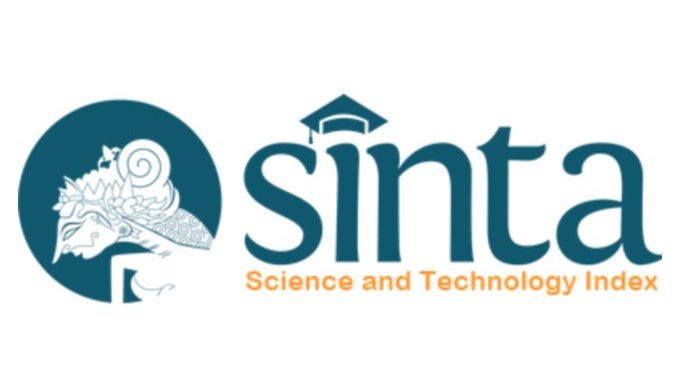Pengaruh Protein RPGRIP1L pada Pembentukan Silia Primer sebagai Kandidat Target Terapi Gen Penyakit Siliopati
DOI:
https://doi.org/10.55175/cdk.v45i3.815Kata Kunci:
RPGRIP1L, siliopati, silia primer, zona transisiAbstrak
Silia primer yang pada mulanya dianggap sebagai organel tanpa fungsi khusus, ternyata saat ini diketahui merupakan pusat koordinasi berbagai jalur transduksi sinyal sel. Salah satu penyakit siliopati dengan manifestasi klinis terberat adalah sindrom Meckel (MKS) dan sindrom Joubert (JBTS). Kedua sindrom ini disebabkan oleh absennya protein RPGRIP1L pada zona transisi silia primer. Penelitian ini bertujuan melihat pentingnya peran RPGRIP1L dalam ciliogenesis. RPGRIP1L diredam ekspresinya dan diperiksa pengaruhnya terhadap: (1) frekuensi ciliogenesis, (2) tingkat ekspresi protein pada jalur sinyal Hedgehog, dan (3) lokalisasi protein silia primer lainnya. Hasil penelitian menunjukkan bahwa absennya RPGRIP1L menurunkan frekuensi ciliogenesis hingga 46%. Turunnya frekuensi ciliogenesis ini bukan disebabkan karena turunnya tingkat ekspresi protein silia primer, melainkan kesalahan lokalisasi; hanya protein yang terlibat pada proses awal ciliogenesis sebelum pembentukan zona transisi yang terlokalisasi dengan tepat tanpa adanya RPGRIP1L. Tidak terekrutnya protein di silia primer mengindikasikan fungsi RPGRIP1L sebagai perancah bagi protein-protein silia primer lainnya. Selain itu, tanpa adanya RPGRIP1L, aksonema tidak dapat tumbuh dari sentriol walaupun protein selubung sentriol, CP110, telah dilepaskan oleh TTBK2.
Primary cilia, which has been long considered as a vestigial organelle of little functional importance, is now known as a coordination hub for many signal transduction pathways. Two worst clinical manifestations of ciliopathies are the Meckel (MKS) and Joubert (JBTS) syndrome; Both are caused by the absence of RPGRIP1L protein at the transition zone of primary cilia. This research aims to check the role of RPGRIP1L in ciliogenesis. The effect of RPGRIP1L knockdown towards (1) ciliogenesis frequency, (2) Hedgehog signaling protein expression and (3) localization of other primary cilia proteins were checked using qRT-PCR and immunostaining techniques. It was found that knockdown of RPGRIP1L has caused a 46% reduction of ciliogenesis frequency. The reduction is not due to a lower expression of primary cilia protein, but mis-localization of the proteins; only the proteins which are involved in the early phase of ciliogenesis were correctly localized after RPGRIP1L knockdown, indicating the anchoring function of RPGRIP1L. Moreover, despite the removal of CP110 by TTBK2, the axoneme was not elongated in the absence of RPGRIP1L,
Unduhan
Referensi
Veland IR, Awan A, Pedersen, Yoder BK, Christensen ST. Primary cilia and signaling pathways in mammalian development, health and disease. Nephron Physiology 2009;111(3):39-53. doi: 10.1159/000208212.
Delous M, Baala L, Salomon R, Laclef C, Vierkotten J, Tory K, et al. The ciliary gene RPGRIP1L is mutated in cerebelo-oculo-renal syndrome (Joubert syndrome type B) and Meckel syndrome. Nat Genet. 2007;39(7):875-81.
Boucher C, Sanford R. Autosomal dominant polycystic kidney disease (ADPKD, MIM173900, PKD1 and PKD2 genes, protein products known as polycystin-1 and polycystin-2). Eur J Hum Genet. 2004;12:347-54.
Parisi M. Clinical and molecular features of Joubert syndrome and related disorders. Am J Med Genet C: Semin Med Genet. 2009;151:326-40.
Bergmann C, Fliegauf M, Brüchle NO, Frank V, Olbrich H, Kirschner J, et al. Loss of nephrocystin-3 function can cause embryonic lethality, Meckel-Gruber-like syndrome, situs inversus and renal-hepatic-pancreatic dysplasia. Am J Hum Genet. 2008;82:959-70.
Kumari N. Post -mortem examination of prenatally diagnosed fatal renal malformation. J Perinatal. 2008;28:736-42.
Gerdes JM, Davis EE, Katsanis N. The vertebrate primary cilium in development, homeostasis and disease. Cell. 2009;137:32-45. doi: 10.1016/j.cell.2009.03.023
Lu QL, Insinna C, Ott C, Stauffer J, Pintado PA, Rahajeng J, et al. Early steps in primary cilium assembly require EHD1/EHD3-dependent ciliary vesicle formation. Nature Cell Biology 2015;17(3):228-40. doi: 10.1038/ncb3109.
Kiprilov EN, Awan A, Desprat R, Velho M, Clement CA, Byskov AG, et al. Human embryonic stem cells in culture possess primary cilia with hedgehog signaling machinery. J Cell Biol. 2008;180:897-904.
Oda T, Chiba S, Nagal T, Mizuno K. Binding to Cep164, but not EB1, is essential for centriolar localization of TTBK2 and its function in ciliogenesis. Genes Cells. 2014;19(12):927-40. doi: 10.1111/gtc.12191.
Unduhan
Diterbitkan
Cara Mengutip
Terbitan
Bagian
Lisensi
Hak Cipta (c) 2018 https://creativecommons.org/licenses/by-nc/4.0/

Artikel ini berlisensi Creative Commons Attribution-NonCommercial 4.0 International License.





















